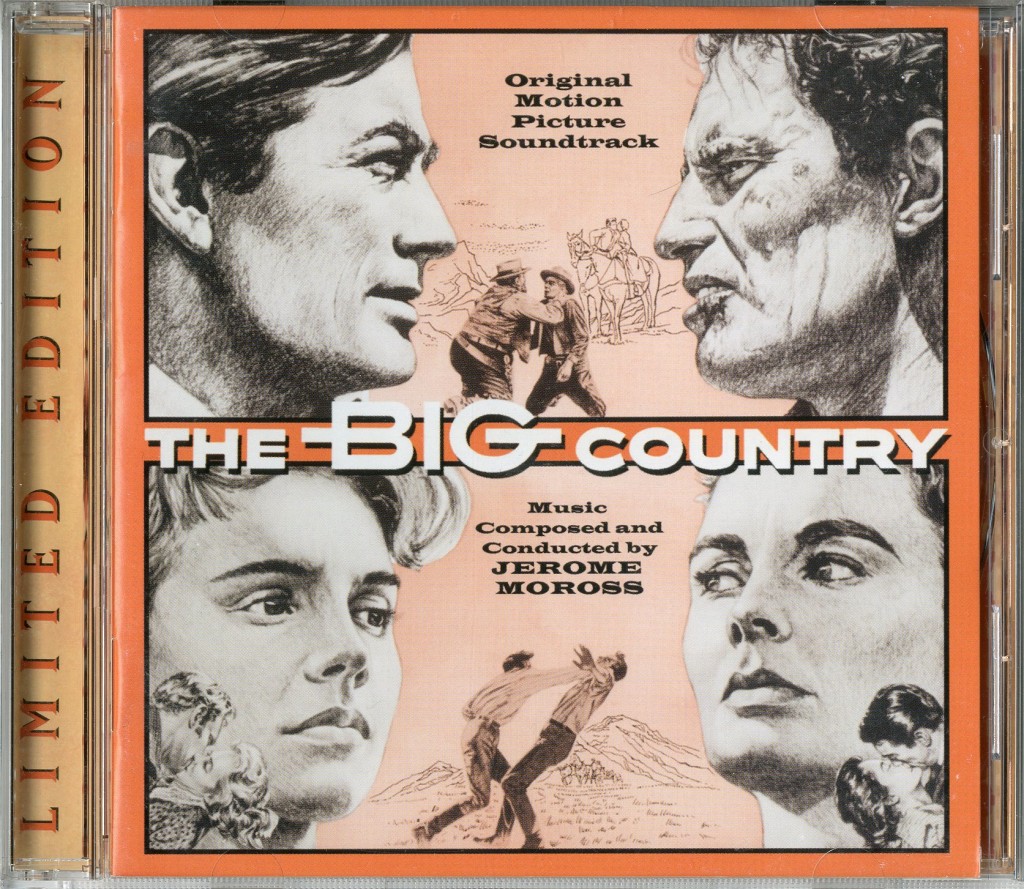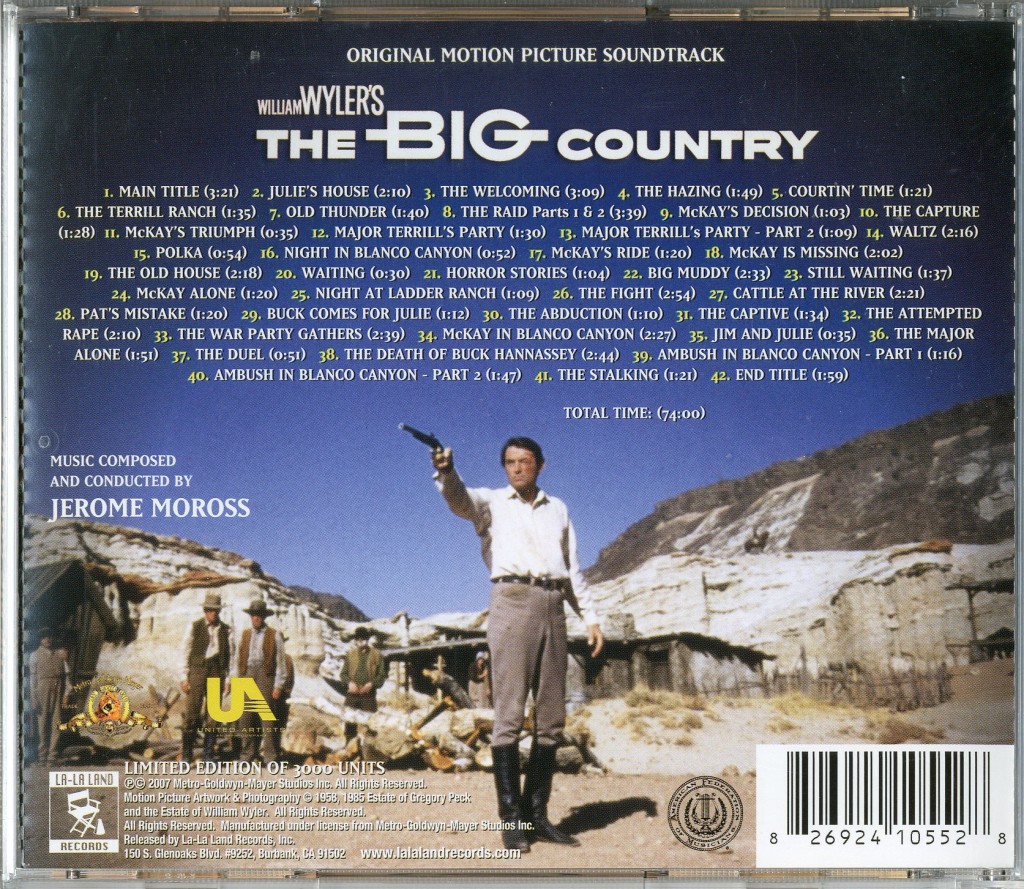The three greatest Western soundtracks, in my view, are those for The Magnificent Seven (Elmer Bernstein), The Cowboys (John Williams) and The Big Country (Jerome Moross). And at the top of that very short, very exclusive list, is Jerome Moross’ wonderful, brilliant score for The Big Country.
As with most great scores there are several independent themes which run through the work, sometimes alone, sometimes grandly intersecting, creating a tapestry of intertwining melody, harmony and euphony. The “Main Title” is a perfect example. It begins with the whirling, twirling strings suggesting wagon wheels racing across the frontier and brass in a major key establishing a broad base for the action to come. The music then segues into a syncopated rhythm of the main theme, a climbing, soaring melody both majestic and poignant, before restaging the opening brassy foundation, and then easing into the story’s beginning.
Moross’ music, like so much Western movie music, reminds one of Aaron Copland’s — bright, crisp, flavorful and exuberant. In fact, Moross had worked with Copland during his early days in Tinseltown, and the two had great mutual respect for one another. Nowhere in the score is Copland’s influence more apparent than in “The Welcoming,” Moross’ brisk, bold and deft chase theme as sea captain Jim McKay (Gregory Peck), coming to the West for the first time, is hazed by Buck Hannassey (Chuck Connors). A sly humor to the music is present as well, reiterating to the audience that this hazing is not particularly serious, though McKay’s fiancé Pat Terrill (Carroll Baker) considers it so.
A gentle highlight is the almost whimsical theme used when McKay declines to ride the bronco “Old Thunder.” Only parts of this theme were used in the film; it is heard here in its entirety. While some of the score consists of action cues, much of it reflects Jim McKay’s view of the West (which, in turn, reflects his view of the sea): a vast, unspoiled, pristine area with depths of beauty and wonder that promise exploration and fulfillment for years to come. Moross’ music for this mindset is lyrical and serene, as evidenced in “McKay’s Ride” and, especially, “Big Muddy,” the score’s most evocative expression of the main theme.
I love the gentle side of the score, but Moross also excels at building tension in other cuts such as “The Raid” (Parts 1 and 2), “Pat’s Mistake,” “The War Party Gathers,” “McKay in Blanco Canyon” and, most triumphantly, in “The Major Alone.” To be truthful, there’s not a whole lot of action in the movie, but Moross skillfully creates the aural illusion that shooting will erupt at any moment throughout the film. And when violence erupts, as in “The Fight,” “The Attempted Rape,” “The Duel” and, especially, “The Stalking,” melody is subordinated to urgent musical strains of warning and calamity, most often expressed by sharp, staccato, minor key phrases that continually climb in pitch until the penultimate moment of cathartic savagery.
This CD contains Moross’ complete score, including some music not included in the final edit. It is not the only version available; a terrific 1988 18-track Silva Screen Records recording of the score by the Philharmonia Orchestra is also very worthwhile. In any case, this is one of the finest soundtracks ever recorded. (10:2).


